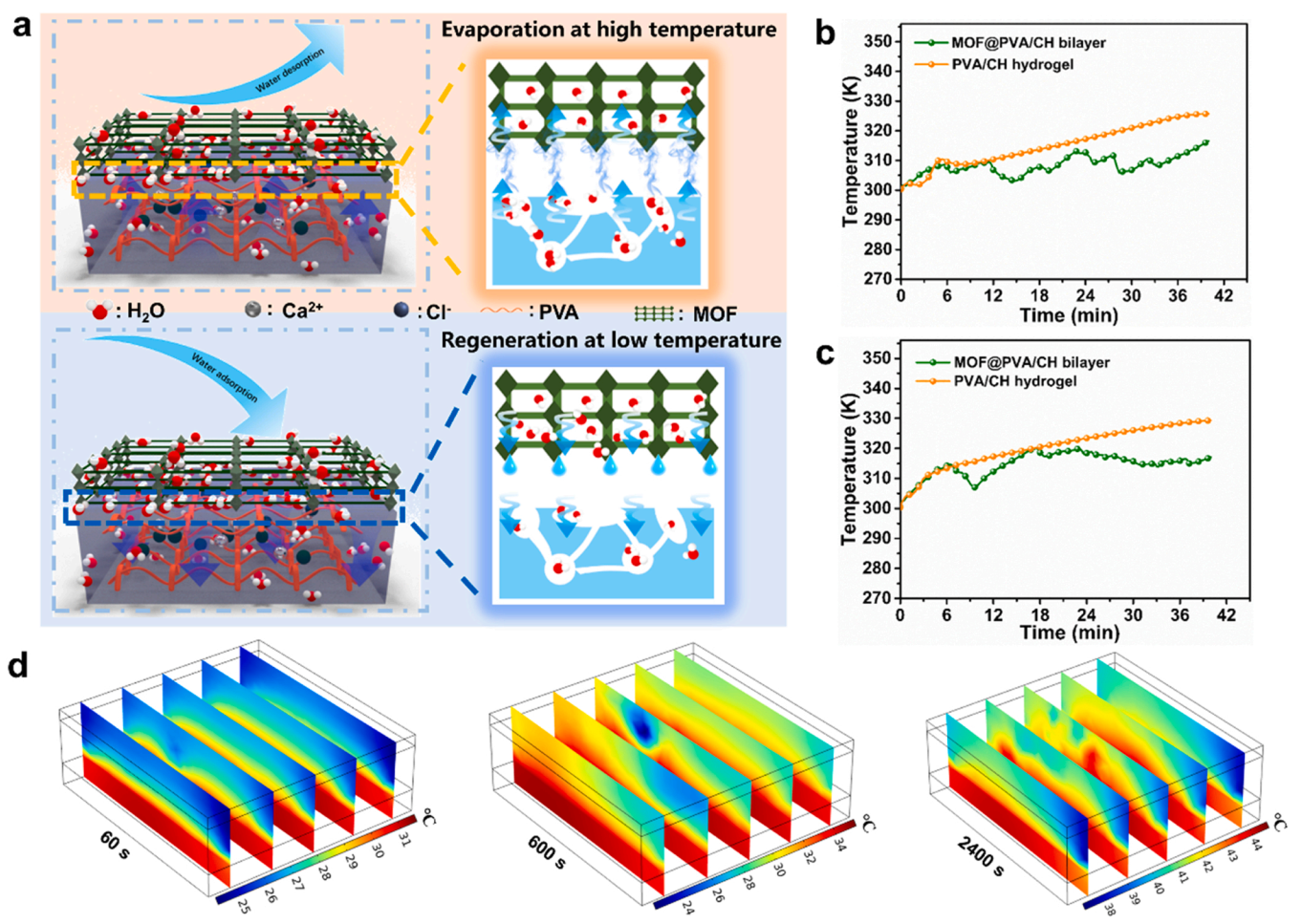 首页»
科学研究
首页»
科学研究
陈晓老师—Nano Energy (IF: 19.1)
2022-11-19
网站编辑
相变水凝胶用于自供能热管理
Abstract: With increasing global installation of photovoltaic panels and more complex functionalities of smart electronic devices, a fundamental problem in photovoltaic conversion and electronic device operation is massive heat generation, which severely reduces energy utilization efficiency and service life. Herein, we proposed a self-powered thermal management strategy integrating metal-organic framework (MOF) and liquid-gas phase change hydrogel ((Poly (vinyl alcohol)/CaCl2⋅6H2O, PVA/CH), which is much beyond traditional solid-liquid phase change materials in phase change enthalpy. Benefiting from the self-adaptive capability of MOF, MOF@PVA/CH bilayer was capable of efficiently evaporating water molecules with a rate of ~0.90 kg m-2h-1 at higher temperature and capturing water molecules with a rate of 0.21 g g-1 from the surrounding humid air at lower temperature for self-regeneration. Specifically, this self-adaptive passive cooling strategy tremendously boosted the thermal management efficiency of the simulative heater, and reduced the surface temperature of solar cell by 18℃. Our proposed approach provides a promising reference for achieving high cooling efficiency, low-energy consumption, and self-powered thermal management for thermo-related devices.

Figure 1. Structural and chemical characterization of MOF@PVA/CH bilayer. (a) Photograph of MOF@PVA/CH bilayer that consists of PVA/CH phase change hydrogel (1-mm thick) and MOF layer (4-mm thick). (b) Schematic of structure for MOF@PVA/CH bilayer. Photographs showing the (c-d) shape adaptability and adhesiveness. (e) SEM image of MOF. (f) SEM image of MOF@PVA/CH bilayer. (g) Dynamic mechanical analysis of storage modulus (G′) and loss modulus (G′′) between PVA hydrogel and PVA/CH phase change hydrogel. (h) FTIR spectra of MOF, PVA, PVA/CH phase change hydrogel and MOF@PVA/CH bilayer.

Figure 2. (a) Schematic of Self-powered thermal management based on automatically performing the water sorption or desorption process depending on the operating temperature of the device and ambient conditions in MOF@PVA/CH bilayer. Theoretical simulation of the surface temperature of PVA/CH phase change hydrogel and MOF@PVA/CH bilayer as a function of heating time (b) at a heating power of 1 W and (c) at a heating power of 1.5 W. (d) Temperature distribution of MOF@PVA/CH bilayer at 60 s, 600 s and 2400 s at a heating power of 1.5 W. (The modelled model was composed of electronic heater, PVA/CH phase change hydrogel layer and MOF layer from bottom to top.).
文献链接:Piao Cheng1, Zhaodi Tang1, Xiao Chen*, Jianhang Xu, Panpan Liu, Xiaowei Zhang, Ge Wang*. Advanced phase change hydrogel integrating metal-organic framework for self-powered thermal management. Nano Energy, 2023, 105, 108009.